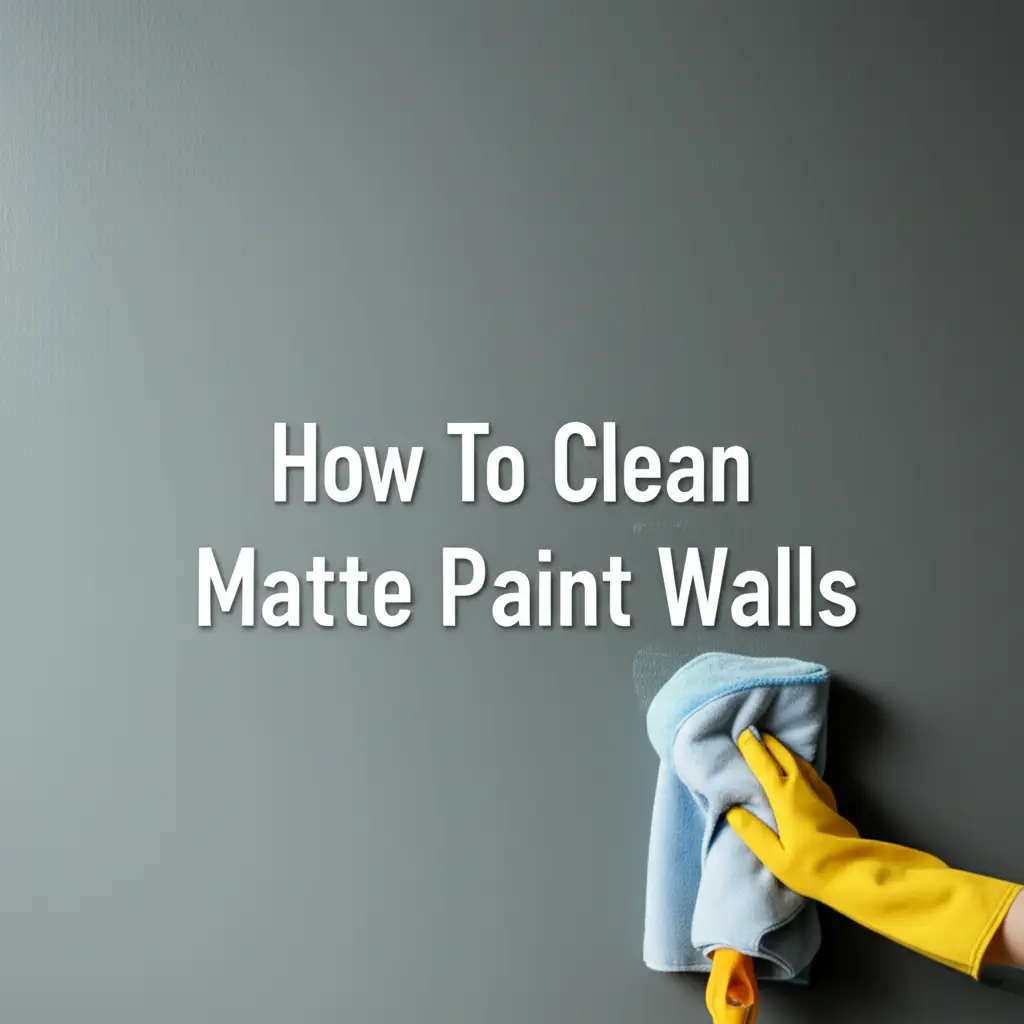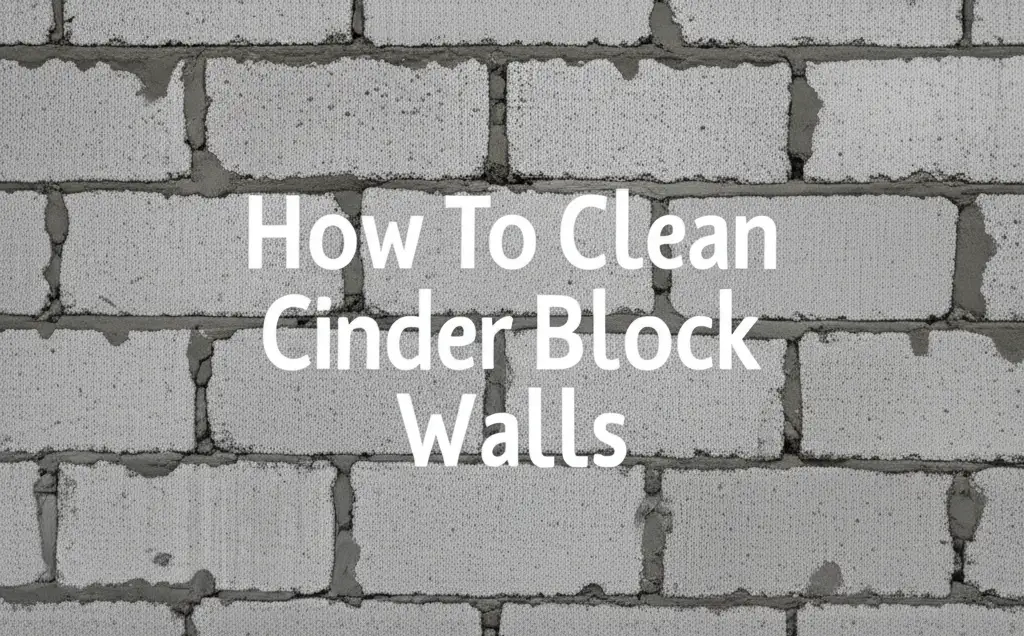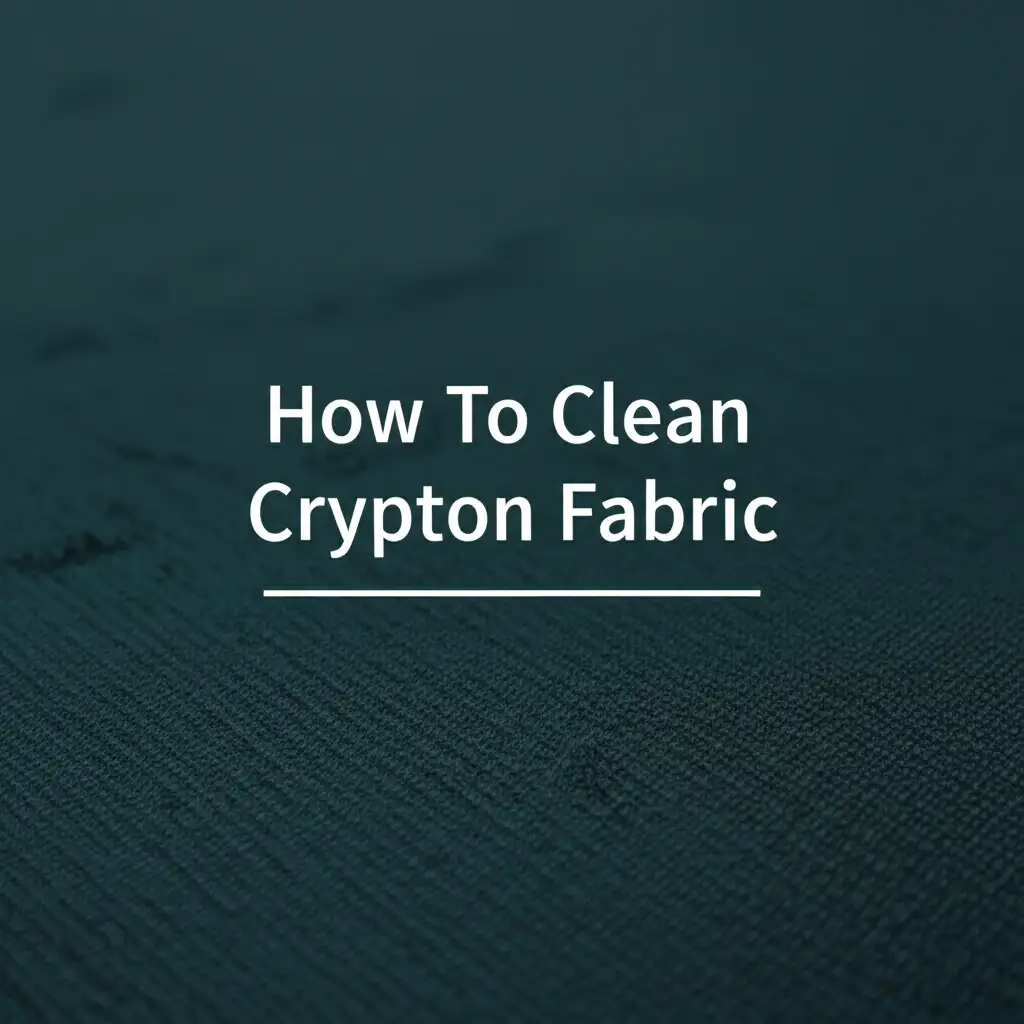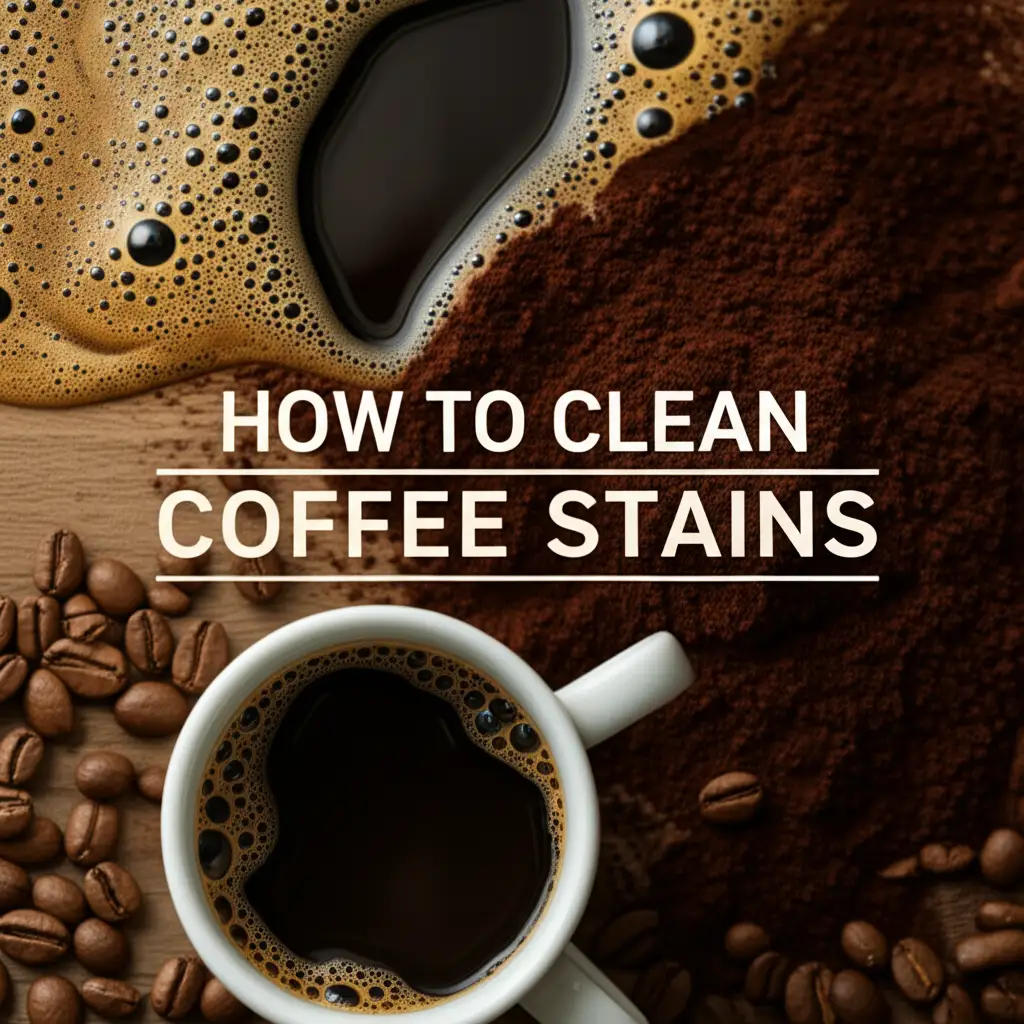· Wall Cleaning · 17 min read
How To Clean Matte Paint Walls

Clean Matte Paint Walls Safely and Effectively
Matte paint offers a sophisticated, non-reflective finish that brings a unique depth to any room. Its soft, velvety appearance hides minor wall imperfections, creating a calm and elegant atmosphere. However, cleaning matte paint walls can feel like a daunting task. Unlike glossier finishes, matte paint is more porous and prone to absorbing moisture and dirt, making it susceptible to streaking and damage if not handled correctly. This guide will walk you through the precise steps to safely clean your matte painted surfaces, ensuring their beautiful finish remains pristine for years to come. I will cover everything from gentle routine maintenance to tackling stubborn stains, providing you with the knowledge to care for your walls with confidence.
Takeaway
- Always perform a patch test in an inconspicuous area before cleaning any matte wall surface.
- Use gentle, non-abrasive tools and cleaning solutions specifically formulated for delicate surfaces.
- Blot stains rather than scrubbing, as scrubbing can damage the finish and cause permanent marks.
- Address spills and marks immediately to prevent them from setting into the porous paint.
- Maintain matte walls with regular, light dusting to minimize the need for wet cleaning.
Cleaning matte paint walls requires a gentle approach. You need mild cleaning solutions, soft cloths, and careful blotting techniques. This method helps remove dirt and stains without damaging the paint’s unique, non-reflective finish. Always test your cleaning method in a hidden area first to ensure it does not harm the paint.
Understanding Matte Paint’s Delicate Nature
Matte paint gives walls a soft, non-shiny look. This finish helps hide wall imperfections, creating a smooth appearance. People often choose matte for its elegant and sophisticated feel. However, this beautiful finish is also quite delicate.
Matte paint has a porous surface. This means it has tiny openings that can absorb liquids and dirt more easily than shinier paints. When you try to clean it, this porosity makes matte paint susceptible to issues like streaking or developing shiny spots. Aggressive rubbing or strong cleaners can quickly damage the flat look. The paint’s pigments are more exposed, making it prone to rubbing off or becoming discolored. Understanding this delicate nature is the first step in properly caring for your matte walls. My personal experience confirms that treating matte paint with extreme care truly preserves its beauty.
Shiny paints, like semi-gloss or high-gloss, have a smoother, less porous surface. This smoother surface repels dirt and moisture, making them much easier to wipe clean. Water and cleaning solutions tend to bead up on their surface. This allows for more vigorous cleaning without fear of streaks or damage. In contrast, matte paint absorbs moisture, which can leave watermarks or alter the finish if not dried quickly and evenly. Cleaning flat paint walls shares similar challenges, as matte is a type of flat paint. Learning how to clean flat paint walls can provide additional insights into managing non-glossy surfaces. We must always remember that preserving the integrity of the paint is paramount. Learning how to clean walls without removing paint is essential for any homeowner or cleaner. This knowledge helps prevent accidental damage during cleaning processes.
Gathering Your Gentle Cleaning Arsenal
Before you start cleaning, gather the right tools. Using the correct supplies protects your delicate matte paint. You want items that are soft and non-abrasive. Having everything ready saves time and prevents frustration.
Your essential tools include several clean, soft microfiber cloths. These cloths are excellent for lifting dirt without scratching the surface. You will also need two buckets: one for your cleaning solution and one for clean rinse water. A spray bottle works well for applying a light mist of solution to specific areas. A soft-bristled brush or a vacuum cleaner with a brush attachment helps with initial dusting. Remember, avoid anything abrasive. Steel wool or rough sponges will surely damage your paint finish. My advice is always to go softer than you think you need to.
Recommended Cleaning Solutions
Choosing the right cleaning solution is critical for matte walls. Harsh chemicals can strip the finish or leave permanent marks. I always opt for the gentlest options first.
- Distilled Water: This is your safest bet for very light dust or fresh smudges. Distilled water prevents mineral deposits that tap water can leave. It is perfect for a quick, light wipe-down.
- Mild Dish Soap Solution: For slightly more stubborn dirt, mix a few drops of mild, clear dish soap with a gallon of distilled water. The key is “mild” and “clear” to avoid dyes or strong detergents. Use a tiny amount of soap to prevent residue.
- Baking Soda Paste: This works wonders for specific stains like crayon or scuffs. Mix baking soda with a small amount of water to form a thick paste. Apply it gently and let it sit briefly before wiping.
- White Vinegar (Use with Caution): White vinegar can cut through grease or tough grime. However, its acidic nature requires extreme caution on matte paint. Mix equal parts white vinegar and distilled water. Always test this solution in an inconspicuous area first. Some people might find it useful to learn how to clean walls with vinegar for other surfaces.
Always test any cleaning solution in a hidden spot, like behind a large piece of furniture or near the floorboard. Apply a tiny amount, let it dry, and check for any changes in color or finish. This simple step prevents potential damage to your visible walls.
Routine Dusting and Light Surface Cleaning
Regular maintenance is the best defense against dirty matte walls. Dust and light grime build up over time. Addressing these minor issues promptly prevents them from becoming major cleaning challenges. A consistent routine saves you effort in the long run.
Start with dry dusting. Use a clean, dry microfiber cloth or a soft-bristled duster. Gently wipe down your walls from top to bottom. This removes loose dust particles and cobwebs. For higher areas, a vacuum cleaner with a soft brush attachment works well. I find that doing this weekly, or at least bi-weekly, keeps my walls looking fresh. This step is crucial because loose dirt becomes harder to remove once wet. It also prevents streaks from forming when you move on to wet cleaning. Maintaining clean walls helps prolong the life of your paint.
For light surface marks, a slightly damp cloth is often sufficient. Dampen a clean microfiber cloth with distilled water. Wring it out thoroughly so it is barely damp. Gently wipe the affected area in a small, circular motion or straight down. Avoid rubbing back and forth, as this can create streaks. If the mark persists, try the mild dish soap solution. Dip your cloth into the solution, wring it out completely, and blot the spot. Finish by blotting with a clean, water-dampened cloth to remove any soap residue. Pat the area dry immediately with another clean, dry microfiber cloth. This quick drying prevents water spots on the porous matte finish. This method is effective for light dirt and smudges. It helps to keep your walls pristine without causing damage.
Tackling Stubborn Stains on Matte Walls
Stubborn stains on matte walls require specific attention. These marks can be challenging because matte paint absorbs substances easily. It is crucial to act quickly and use the right technique. Different stains need different approaches to remove them safely.
For general scuff marks, often from shoes or furniture, a dry method is best. Try gently rubbing the mark with a clean, dry microfiber cloth. If this does not work, lightly dampen a clean white eraser (not a pencil eraser, as it might smudge) and gently rub the scuff. Blot the area with a dry cloth afterward. For crayon marks, a small amount of baking soda paste works well. Mix baking soda with water to form a thick paste. Apply it to the crayon mark using your finger or a soft cloth. Let it sit for a few minutes. Then, gently wipe away the paste and crayon with a clean, damp cloth. Always remember to blot, not scrub, to avoid damaging the paint. Removing dirt from walls can be a persistent challenge, but it is achievable with the right tools and techniques. Knowing how to clean dirt off walls is a valuable skill for any homeowner.
Grease stains, common in kitchens, need a degreasing agent. Mix a few drops of mild, clear dish soap with distilled water. Dampen a clean microfiber cloth with this solution, wring it out well, and blot the grease stain. Work from the outside of the stain inwards to prevent spreading. For tougher grease, a small amount of rubbing alcohol on a cotton ball can be used, but test it first. After blotting the stain, use a separate clean, water-dampened cloth to blot away any soap or alcohol residue. Finally, dry the area immediately with a clean, dry cloth. For mold spots, a solution of white vinegar and water is often effective. Mix equal parts white vinegar and water in a spray bottle. Lightly mist the moldy area and let it sit for 10-15 minutes. Then, gently blot it with a clean cloth. For comprehensive guidance on removing mold, you might consult resources on how to clean mold off walls. When dealing with any type of stain, it is also important to consider techniques for how to clean stains off walls generally.
Advanced Cleaning and Full Wall Refresh
Sometimes, a matte wall needs more than just spot cleaning. This might happen in high-traffic areas or after a long period without maintenance. A full wall refresh can bring back the wall’s uniform look. However, full wet cleaning of matte walls is risky. It often leads to streaking or shiny spots. Therefore, approach this task with extreme caution and only when necessary.
Before starting, prepare your area. Remove all furniture from the wall. Lay down drop cloths to protect your floors. You will need two buckets: one with a very mild cleaning solution (a few drops of clear dish soap in a gallon of distilled water) and one with plain distilled water for rinsing. Also, have plenty of clean, dry microfiber cloths ready. The key to success is working in small sections and drying immediately. I find preparing everything beforehand reduces stress and allows for a smooth process. It is similar to preparing a surface properly before painting; attention to detail ensures a better outcome.
Full Wall Cleaning Technique
- Prepare Your Solution: Mix a tiny amount of clear, mild dish soap into a bucket of distilled water. Make sure it is very diluted. The less soap, the better.
- Test a Spot: Always, always test your cleaning solution and technique in an inconspicuous area. This step confirms no damage or streaking will occur.
- Work in Small Sections: Dip a clean microfiber cloth into your cleaning solution. Wring it out extremely well. The cloth should be barely damp. Start at the top of a small section (about 2x2 feet). Gently wipe the wall in a single, downward motion. Do not rub back and forth.
- Rinse Lightly: Immediately after wiping a section, take a second clean microfiber cloth. Dampen it with plain distilled water and wring it out completely. Gently wipe the same section to remove any soap residue. This step is critical to prevent streaks.
- Dry Immediately: Use a third clean, dry microfiber cloth. Gently pat the cleaned section dry right away. Do not let the wall air dry. Air drying almost guarantees streaks on matte paint.
- Overlap Sections: Move to the next small section, slightly overlapping the previously cleaned area. Maintain a consistent, gentle pressure. Continue this process across the entire wall.
This method minimizes the risk of streaks or watermarks. Remember, less is more when it comes to liquid on matte paint. If your walls are heavily soiled, consider if repainting is a better solution. Sometimes, cleaning walls with a mop is suggested for large areas, but this is not recommended for matte paint, as it applies too much water. Knowing how to clean walls with mop is useful for other surfaces, but not for delicate matte finishes. For very specific situations where walls are extremely dirty, such as after a fire, you might need to look into specialized methods like how to clean soot off walls, but these are usually beyond typical matte wall care.
Essential Do’s and Don’ts for Matte Paint Longevity
Caring for matte paint walls requires a specific mindset and adherence to certain rules. Following these guidelines helps maintain the integrity of your beautiful finish. Ignoring them can lead to irreversible damage. I have learned these lessons through trial and error, so I am sharing them to save you headaches.
Do’s for Matte Paint Care
- Do Test First: Always perform a patch test with any cleaning solution or tool in an inconspicuous area. This is the single most important rule. It prevents widespread damage.
- Do Use Soft Materials: Opt for clean, soft microfiber cloths or sponges. These materials are gentle on the delicate surface of matte paint. Rougher materials will scratch the finish.
- Do Blot, Don’t Scrub: When removing stains, gently blot the area. Scrubbing generates friction. This friction can burnish the matte paint. It leaves behind a shiny spot that cannot be fixed.
- Do Use Minimal Moisture: Wring out cloths thoroughly. They should be barely damp, not wet. Excess water will leave streaks or watermarks on porous matte paint.
- Do Dry Immediately: After any wet cleaning, gently pat the area dry with a clean, dry cloth. This prevents water from soaking into the paint and leaving marks.
- Do Clean Spills Quickly: Address any spills or marks as soon as they occur. Fresh stains are much easier to remove than dried, set-in ones.
- Do Dust Regularly: Frequent dry dusting prevents the buildup of dirt. This reduces the need for wet cleaning, which is always riskier for matte paint.
Don’ts for Matte Paint Care
- Don’t Use Abrasive Cleaners: Avoid harsh chemicals, ammonia-based cleaners, or abrasive scrubbing pads. These will damage the matte finish beyond repair.
- Don’t Scrub: As mentioned, scrubbing creates shiny spots. It also removes paint particles, thinning the finish.
- Don’t Over-Wet the Surface: Never spray cleaning solution directly onto the wall. Always apply it to your cloth first. Over-wetting leads to streaks and watermarks.
- Don’t Use Colored Cloths: Stick to white or light-colored cloths to prevent dye transfer onto your walls. This is especially true for lighter paint colors.
- Don’t Use Magic Erasers Casually: While effective on some marks, Magic Erasers are abrasive. They act like very fine sandpaper. Use them with extreme caution and only as a last resort. Always test them in an hidden spot first. They can easily remove the matte finish and create shiny spots.
- Don’t Ignore Stains: Leaving stains on matte walls allows them to set deeper into the porous surface. This makes them much harder, or even impossible, to remove later.
- Don’t Mix Cleaning Products: Stick to one simple, mild solution. Mixing chemicals can create harmful fumes or unpredictable reactions that damage your paint.
Adhering to these do’s and don’ts will significantly extend the life and beauty of your matte painted walls. They are the cornerstone of effective and safe matte wall maintenance. You can avoid common mistakes by following these simple rules.
Preventing Future Marks and Maintaining Your Matte Finish
Prevention is the best strategy when it comes to matte paint walls. It reduces the need for aggressive cleaning, which always carries a risk of damage. Proactive measures help your walls stay pristine with minimal effort. Think of it as protecting an investment.
Consider areas prone to contact. In high-traffic hallways, near light switches, or behind chairs, matte paint is more likely to collect marks. Install clear protective wall guards around light switches and door handles. Place furniture slightly away from walls to prevent scuffs. In children’s rooms, consider a chair rail or wainscoting that can be painted with a more durable finish. For kitchens, a backsplash around the cooking area prevents grease splatter. These small changes make a big difference. I have found that a little foresight saves a lot of cleaning effort.
Regular, light maintenance helps preserve your matte finish. Make dry dusting a weekly habit. Use a soft, clean microfiber cloth or a feather duster. This prevents dust and cobwebs from building up. If you notice a fresh smudge or light fingerprint, address it immediately. A barely damp cloth (distilled water only) can often wipe it away before it sets. Keep a small spray bottle with diluted mild soap solution ready for quick spot cleaning. This immediate attention prevents small marks from becoming stubborn stains.
For areas that frequently get touched, such as around doorknobs or light switches, consider applying a clear, non-yellowing protective coat. Some products exist that can add a layer of protection without altering the matte finish. Always test such products in an inconspicuous area first. If a small area of your wall does get damaged or deeply stained beyond repair, consider keeping a small amount of leftover paint for touch-ups. Carefully apply a thin layer with a small brush, feathering the edges. Be aware that touch-ups can sometimes be visible on matte paint due to differences in application or aging of the original paint. However, it is often a better option than a permanent stain. Proactive steps keep your matte walls looking beautiful for a long time.
FAQ Section
Can I use a Magic Eraser on matte paint walls?
Using a Magic Eraser on matte paint is risky. It acts like fine sandpaper, and can remove the paint’s matte finish, leaving shiny spots. Only use it as a last resort for very stubborn marks, and always test it first in an inconspicuous area. Use minimal pressure and blot gently.
What causes streaks on matte paint walls after cleaning?
Streaks on matte paint walls occur due to excess moisture or soap residue. Matte paint is porous and absorbs liquids easily. If you use too much water, too much soap, or do not dry the wall immediately, the liquid or residue settles, causing visible streaks or watermarks.
How often should I clean my matte walls?
For routine maintenance, dry dust your matte walls weekly or bi-weekly to prevent dirt buildup. Spot clean stains and marks immediately as they appear. A full wet cleaning of matte walls should be done only when absolutely necessary, perhaps once or twice a year, or not at all if regular maintenance is effective.
Can I use regular household cleaners on matte paint?
No, you should not use regular household cleaners. Many contain harsh chemicals, abrasives, or strong detergents. These can damage the delicate matte finish, causing discoloration, dullness, or shiny spots. Stick to mild, clear dish soap diluted in distilled water, or plain distilled water for best results.
How do I remove grease stains from matte paint?
To remove grease stains, mix a few drops of mild, clear dish soap with distilled water. Dampen a clean microfiber cloth with this solution, wring it out completely, and blot the grease stain gently. Work from the stain’s edges inward. Blot with a clean, water-dampened cloth to rinse, then dry immediately.
Is matte paint really harder to clean than other finishes?
Yes, matte paint is generally harder to clean than glossier finishes like satin, semi-gloss, or high-gloss. Its porous nature absorbs dirt and moisture more readily. This makes it prone to streaking, watermarks, and damage from scrubbing. It requires more gentle and precise cleaning techniques.
Conclusion
Caring for matte paint walls does not have to be an intimidating task. While these beautiful surfaces demand a gentle touch and specific techniques, they are certainly manageable. By understanding the porous nature of matte paint and committing to a routine of gentle care, you can maintain its sophisticated finish for years. Remember, prevention is key; address spills quickly and dust regularly to minimize the need for extensive cleaning.
Always use soft materials, very little moisture, and gentle blotting motions. Avoid harsh chemicals and abrasive scrubbing at all costs. Following these simple, yet crucial, steps will help you preserve the elegant, non-reflective appearance of your matte paint walls. You have the knowledge now to confidently clean matte paint walls, ensuring your home remains beautiful and pristine. Begin your gentle wall care routine today, and enjoy the lasting beauty of your matte surfaces.
- matte paint cleaning
- wall cleaning tips
- delicate wall care
- stain removal
- home cleaning
- paint maintenance




